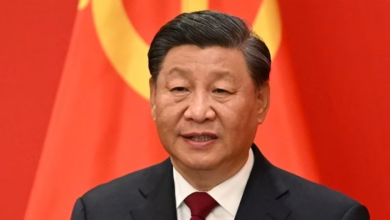The mayor of Kathmandu has posted a map of “Greater Nepal” in response to the “Akhand Bharat” map of India
Balendra Shah, the mayor of Kathmandu, has erected a new “Greater Nepal” map in his office as a retaliatory measure as the conflict over India’s “Akhand Bharat” map displayed in the new Parliament building grows among the opposition parties in Nepal.
The opposition parties, especially the CPN-UML, have attacked the map that depicts the Himalayan country as a part of the old Indian continent, despite the fact that the Nepali government has kept mute on the subject.
They have requested that the administration speak with India about the issue.
The map was put in his office before Mayor Shah’s trip to India; he is now in Bengaluru for his wife’s treatment.
The Teesta in the east and the Sutlej in the west formerly separated Nepal’s territory. However, Nepal lost a significant portion of its country following the conflict with the British.
Following the battle, India was given permanent annexation of the regions from Mechi to Teesta and from Mahakali to Sutlej.
On March 4, 1816, Nepal and the East India Company signed the Sugauli Treaty, which limited Nepal’s territory to Mechi-Mahakali.
The map of “Greater Nepal” in Shah’s office includes lands that are now under Indian control from the East Teesta to the West Kangra.
There are still arguments made in favour of India giving those regions to Nepal.
Phanindra Nepal, a nationalist activist, has long advocated for a Greater Nepal.
The nation should also formally publish the “Greater Nepal” map, according to Gagan Thapa, general secretary of the Nepali Congress, the biggest party in Parliament.
“Nepal also maintains the right to publish the map of Greater Nepal and consider it if any country publishes the cultural map and progresses forward. India should not complain if Nepal decides to publish the revised map. Instead, it ought to embrace it,” Thapa said.
Prime Minister Pushpa Kamal Dahal Wednesday defended India in the continuing dispute about the “Akhand Bharat” map, claiming it was not a political matter.
The Prime Minister, often known as Prachanda, mentioned bringing up the subject during his recent trip to India in a speech to the National Assembly.
“We brought up the new Indian map that was shown in Parliament. Although we haven’t done a thorough study, we raised this concern seriously, as was noted in the media. The Indian side, however, countered that it was a cultural and historical map rather than a political one. This is not intended to be a political strategy. It should be researched. But I raised it,” he said.
The territories of Kalapani, Lipu Lekh, and Limpiydhura, which are presently a part of India but which Nepal also claims, have been the subject of boundary disputes.
The Nepali government released a new political map in 2020 that included the regions as a part of its territory in response to Indian claims.
Bilateral relations reached an all-time low as a result of this conflict.







